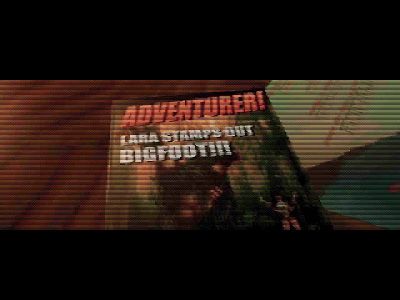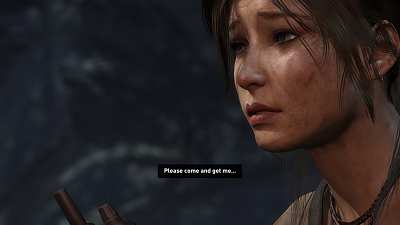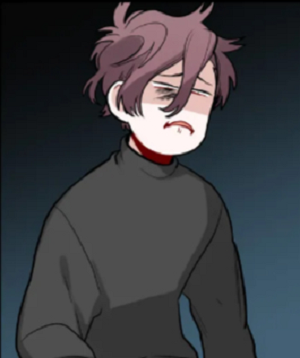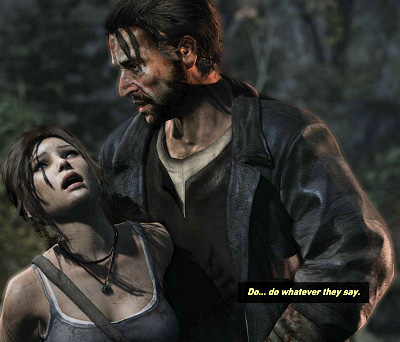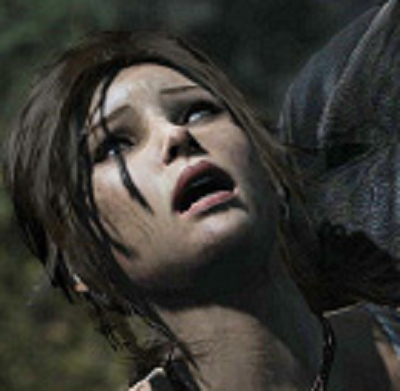I gave myself a reading challenge to read twelve books this year. I thought I’d start relatively small because I know I’ve become kind of lazy and slow. This book counts at least as four separate books, right? I remember when I was browsing for Lovecraft’s books, I was like,
me: the complete tales for ten euros? Yes, please. *buys it*
me: *when picking it up* Why is this thing so heavy?
And as it turned out, it was less of a book and more of a brick.
I’ve been reading this since — I can’t even remember. I first made an aborted attempt but then got distracted by other things and got back to it… last year maybe? As I was getting nearer the end of the book, almost every week I was like, TODAY! I shall finish reading it!
*proceeds to do anything but that*
But finally! I have conquered!
Over 900 pages.
Definitely four separate books at least.
I still have some of Lovecraft’s collaboration works, essays and correspondence unread but for the foreseeable future I have no intention nor interest in reading them. There’s only so much H. P. Lovecraft a girl can take and if I never have to see the word shew, shewed, shewn again… it’d be too soon.
In this post I’m going to talk about things I rarely talk about but which are kind of inevitable when it comes to Lovecraft, I think? So, you know, don’t read this if you’re a very sensitive soul and words give you heart palpitations?
Lovecraft is one of those authors you probably first get exposed to through casual browsing of the internet or consuming mass media. Everyone seems to have an opinion on Lovecraft and — from my reading of the sixty-fucking-eight tales of his — most of these opinions seem to be wrong.
Whenever the name Lovecraft is evoked, at least one person has to bring up his infamous racism and the quote:
The oldest and strongest emotion of mankind is fear, and the oldest and strongest kind of fear is fear of the unknown.
while tittering to themselves, I imagine, on how clever and enlightened they are. You know, unlike that nasty old bigoted Lovecraft.
That quote wasn’t anywhere in his tales, by the way. I would’ve remembered because I would’ve posted it. As it turns out, it actually comes from his study Supernatural Horror in Literature — in which he discusses, you know, supernatural horror. In literature. Which, for Lovecraft, was mostly the existential cosmic kind.
So it seems rather misleading if not outright deceitful to apply it to Lovecraft’s infamous racism.
One) It’s easy to accuse people of anything who aren’t alive to defend themselves.
Two) Even if he were alive to defend himself, he probably wouldn’t be given the opportunity to.
Three) No one reads the original sources — and when I say ‘no one’ I do mean no one — so you can pretty much make up outright lies about anything and no one would check. Particularly the tumblr kind who, for example, have spun a completely different Supernatural out of thin air than the one that actually ran for fifteen seasons on tv. You’d be amazed how many people who — by their own admission! — never even watched Supernatural think that the show “teased” Dean/Castiel just because they got exposed to it on tumblr. (P. S. not all of them are like this. There are actual fans of the show on tumblr as well.)
Four) As the saying goes, “a lie can travel halfway around the world while the truth is putting on its shoes”.
As far as I’m concerned, none of this infamous racism was apparent in his tales. At most, his tales seemed like typical “americanism” for the lack of a better term. And by that I mean themes common in America’s stories, particularly of the urban fantasy kind: such as, ignorance is strength, European folklore and Europeans are monsters, particularly the blue-eyed and fair-haired kind, European aristocracy are incestuous cannibals (well… I guess the incest isn’t that far off the mark?), rural people are dimwitted and bigoted, Eastern Europeans can fuck off, etc.
In Herbert West-Reanimator there is this one black character that everyone likes to bring up because Lovecraft didn’t describe him in flattering terms, it’s true. For context, though, the character was a corpse then a zombie and Lovecraft was writing horror, and the literal monster in this tale is a white person with blue eyes and blonde hair.1 In another tale, however — The Case of Charles Dexter Ward if I recall correctly — other minor black characters were described as sweet and helpful.
It’s true, though, that Lovecraft didn’t describe any people nicely if he described them at all. In fact, his most beautiful character was apparently based on his jewish friend… I think. But don’t quote me on that.
So the entire time I was reading his tales I was like,
this is the big scary racist?
This guy?
I mean, seriously?
The way people on the internet go on, I was expecting something more hardcore or at least different from what I actually got?
Another tale that gets brought up about Lovecraft’s infamous racism is Under the Pyramids. But this was, in fact, a collaboration work with Harry Houdini (or Erich Weisz). Lovecraft simply embellished the thing with, you know, secret undead Egyptian cults and live sphinxes. And apparently everyone missed the part in which Houdini’s embellished character complained about how very European a few towns they visited were.
. . . a drearily European small town with nothing of interest save the great De Lesseps statue, made us anxious to get on to something more worth our while.
But once more disappointment awaited us, for all that we beheld was European save the costumes and the crowds.
I mean… seriously?
Considering that ‘racist’ is practically synonymous with ‘white supremacist’ nowadays then what kind of a white supremacist worth his salt would write blue-eyed and fair-haired whites as literal monsters, European aristocracy as incestuous cannibalistic cults, and have his point of view character complain about how European some places are, no matter how understandable the complaint? I mean, if you’re going to travel to Japan, you’d probably like to see Japanese culture?
If the man was anything, he was probably a good old-fashioned misanthrope which is frankly a sensible sentiment to have the more one knows about humans and their histories of incest, abuse, cannibalism, infanticide, murder, ritual murder, etc.2 And I’m not even talking about towards other people, I’m talking about towards their own people and their own children.
It’s also good to remember that Lovecraft died in 1937. The context in which he lived was different from contemporary sentiments. If I recall correctly, before the 1965 immigration act most immigration to America was from European countries and the country itself was 90% white. Likewise, certain words — you all know the ones I’m talking about and I’m not going to type the euphemism — didn’t become verboten until the end of the 20th century. In other words, decades after Lovecraft died.
Moreover, just because he was mostly writing in the first person point of view it doesn’t mean he was, you know, actually writing his point of view.
That said, I have read that he apparently expressed racist sentiments in his private writings but, as I previously mentioned, for the foreseeable future I have no intention nor interest in reading them. And I don’t know, seems kind of dubious to judge a dead man for the privacy of his thoughts but my advice, as always, is to make up your own mind.3
Now that’s out of the way, let’s get to the tales themselves, shall we?
The oldest and strongest emotion of mankind is fear, and the oldest and strongest kind of fear is fear of the unknown.
According to the nifty introductions to Lovecraft’s tales, this is the theme of his works. Well, and probably according to Lovecraft since he wrote that in his study Supernatural Horror in Literature. His other stated themes would be “‘cosmicism’, a belief that life is incomprehensible to human minds and so the universe is fundamentally opposed to their interest” and “the absolute irrelevance of mankind in the face of the cosmic horrors existing in the universe” and “the vast indifference of the cosmos, and to recognize that human beings are as insignificant as specks of dust”.
I would like to disagree with all of that, I think.
Let’s start with his infamous quote. The ironic thing about it is that you can’t actually write about the ‘unknown’. The moment you write about the ‘unknown’ it becomes ‘known’, and Lovecraft himself gave his ‘unknowns’ names, descriptions, histories, and even weaknesses. Meaning they are not unknown. Never mind that he himself based them on astronomy, other weird tales and existing folklore so at no point were these things actually, truly ‘unknown’.
It’s sort of like the ‘nobody’ main characters in fantasy adventures. The moment you write about a ‘nobody’ the character becomes ‘somebody’.
If anything, to me — and no one else needs to agree with this! — the theme of most of his works seemed to be more or less:
beware of the questions you ask for you might find the answers.
Which is… eeh.
Eeeeh.
Like, I just reaaaally don’t understand urban fantasy’s predilection towards the ignorance of the people. Most of these stories seem to think and assert that the less one knows about the supernatural, or what have you, the safer and happier they are. Which is laughably untrue. The less you know, the more in danger you are.
Hence, “ignorance is strength”. But not for you, you silly proletariat — I mean, pleb — I mean, muggle — I mean, innocent little lamb, you.
But even this isn’t quite it if we consider The Dream-Quest of Unknown Kadath or Kuranes, a homeless man of a defunct aristocratic line if I recall correctly. Or the fact that most of Lovecraft’s characters aren’t actually professors or journalists but dreamers who will pursue the truth no matter what dark, untrodden places it takes them.
No, in fact, most of Lovecraft’s tales seemed to be good old regular fantasy but from the point of view that if these things were actually real, you’d either die or go mad.
But that impression could just be because personally I’d be hard-pressed to classify his tales as horror. Aside from a few delightfully creepy paragraphs or tales, I just didn’t feel the horror, you know? Most of his tales just made me feel sad instead of scared.
And look, long before I even heard or thought of reading Lovecraft, I’d already been reading fantasy and playing video games of the fantasy variety. And in these stories all the fantastical and cosmic horrors of the imagination are real and commonplace. So the most Lovecraft’s tales got out of me was, “Okay. So what?”
The black arts are real!
Okay. So what?
Gods are real and terrible!
Okay. So what?
Humans are an engineered species by a cosmic species beyond our comprehension!
Okay. So what?
Or Facts Concerning the Late Arthur Jermyn and His Family in which Arthur Jermyn found out that he’s descended from albino apes instead of just regular apes and immediately immolated himself, and it’s like? Okay? So what?4 At least in The Shadow Over Innsmouth, the narrator felt the call of the ocean and his — did they have a name? — blood from the fish-frog people.
Like, none of the “truths” in Lovecraft’s tales seemed so terrible that they’d need to be secret.
He did have a knack for describing the emotion of horror, though.
Even Lovecraft’s “monsters” aren’t really monsters either — well, except for European aristocracy and blue-eyed and blonde people, I guess. The Elder Gods — or wait, was it the Great Old Ones? or were those the same thing? — are just beings so far beyond human comprehension that they are like humans to ants. It doesn’t mean they can’t take interest in individual humans and even help them out in some cases (The Dream-Quest of Unknown Kadath or Through the Gates of the Silver Key).
In The Dream-Quest of Unknown Kadath, Randolph Carter goes on a quest to find his perfect dreamland or whatever and comes across an old friend who turned into a leader of ghouls, Pickman. You know, ghouls? The things that feed on human flesh and corpses? And yet Randolph Carter befriends these creatures and they help him out even against their own interests.
The Elder Things (from what I remember) are described as monsters in other tales but in At the Mountains of Madness, Lovecraft wrote:
After all, they were not evil things of their kind. They were the men of another age and another order of being. Nature had played a hellish jest on them — as it will on any others that human madness, callousness, or cruelty may hereafter dig up in that hideously dead or sleeping polar waste — and this was their tragic homecoming. They had not been even savages — for what indeed had they done? That awful awakening in the cold of an unknown epoch — perhaps an attack by the furry, frantically barking quadrupeds, and a dazed defense against them and the equally frantic white simians with the queer wrappings and paraphernalia… poor Lake, poor Gedney… and poor Old Ones! Scientists to the last — what had they done that we would not have done in their place? God, what intelligence and persistence! What a facing of the incredible, just as those carven kinsmen and forbears had faced things only a little less incredible! Radiates, vegetables, monstrosities, star spawn — whatever they had been, they were men!
‘White simians’.
Or the Yithians in The Shadow Out of Time which were monstrous to Nathaniel Wingate Peaslee, the narrator, but were just — really weird-looking scholars of all known universe and epochs.
Not exactly the writings of someone dedicated to depicting the other as alien, incomprehensible and monstrous.
I could say that another theme was that science and modernity have made the world so dull, grey and dreadful that dreams and even monstrous cosmic beings would be preferable to the banality of everyday life.5
When age fell upon the world, and wonder went out of the minds of men; when grey cities reared to smoky skies tall towers grim and ugly, in whose shadow none might dream of the sun or of spring’s flowering meads; when learning stripped earth of her mantle of beauty, and poets sang no more save of twisted phantoms with bleared and inward-looking eyes; when these things had come to pass, and childish hopes had gone away forever, there was a man who travelled out of life on a quest into the spaces whither the world’s dreams had fled.
— Azathoth
And because mere walls and windows must soon drive to madness a man who dreams and reads much, the dweller in that room used night after night to lean out and peer aloft to glimpse some fragment of things beyond the waking world and the greyness of tall cities.
— Azathoth
That night something of youth and beauty died in the elder world.
— The Quest of Iranon
Wonder had gone away, and he had forgotten that all life is only a set of pictures in the brain, among which there is no difference betwixt those born of real things and those born of inward dreamings, and no cause to value the one above the other. Custom had dinned into his ears a superstitious reverence for that which tangibly and physically exists, and had made him secretly ashamed to dwell in visions. Wise men told him his simple fancies were inane and childish, and he believed it because he could see that they might easily be so. What he failed to recall was that the deeds of reality are just as inane and childish, and even more absurd because their actors persist in fancying them full of meaning and purpose as the blind cosmos grinds aimlessly on from nothing to something and from something back to nothing again, neither heeding nor knowing the wishes or existence of the minds that flicker for a second now and then in the darkness.
— The Silver Key
But when he came to study those who had thrown off the old myths, he found them even more ugly than those who had not. They did not know that beauty lies in harmony, and that loveliness of life has no standard amidst an aimless cosmos save only its harmony with the dreams and feelings which have gone before and blindly moulded our little spheres out of the rest of chaos. They did not see that good and evil and beauty and ugliness are only ornamental fruits of perspective, whose sole value lies in their linkage to what chance made our fathers think and feel, and whose finer details are different for every race and culture. Instead, they either denied these things altogether or transferred them to the crude, vague instincts which they shared with the beasts and peasants; so that their lives were dragged malodorously out in pain, ugliness, and disproportion, yet filled with a ludicrous pride at having escaped from something no more unsound than that which still held them. They had traded the false gods of fear and blind piety for those of licence and anarchy.
— The Silver Key
He saw that most of them, in common with their cast-off priestcraft, could not escape from the delusion that life has a meaning apart from that which men dream into it; and could not lay aside the crude notion of ethics and obligations beyond those of beauty, even when all Nature shrieked of its unconsciousness and impersonal unmorality in the light of their scientific discoveries. Warped and bigoted with preconceived illusions of justice, freedom, and consistency, they cast off the old lore and the old ways with the old beliefs; nor ever stopped to think that that lore and those ways were the sole makers of their present thoughts and judgments, and the sole guides and standards in a meaningless universe without fixed aims or stable points of reference. Having lost these artificial settings, their lives grew void of direction and dramatic interest; till at length they strove to drown their ennui in bustle and pretended usefulness, noise and excitement, barbaric display and animal sensation. When these things palled, disappointed, or grew nauseous through revulsion, they cultivated irony and bitterness, and found fault with the social order. Never could they realise that their brute foundations were as shifting and contradictory as the gods of their elders, and that the satisfaction of one moment is the bane of the next. Calm, lasting beauty comes only in dream, and this solace the world had thrown away when in its worship of the real it threw away the secrets of childhood and innocence.
— The Silver Key
. . . and his eyes were weary with seeing the same things for many years, and thinking the same well-disciplined thoughts.
— The Strange High House in the Mist
Admittedly, these dreams and knowledge of the cosmos were only available to those of imagination and the right mental constitution (such as Randolph Carter and Kuranes). However, that’s not quite it either. Because even though Kuranes became like a god himself and Randolph Carter found his perfect dreamland, it turned out that the real dreamlands were the places of their childhood.
Another thing that always gets hyped in reference to Lovecraft is Cthulhu. He featured only in one tale, though, the aptly named The Call of Cthulhu and was only mentioned in others. I don’t quite recall what I was expecting before starting on Lovecraft’s tales, but I’m pretty sure it wasn’t what I actually got. I mean, sure Cthulhu was big and he had tentacles for a beard but I think mostly my feelings were, that’s it? It’s not like he even managed to do anything aside from chasing a boat and sinking back to the bottom of the ocean.
As for the impressions I got of Lovecraft through his stories — because I usually let the author’s writings speak for themselves — he was evidently well-read in mythology, classics, architecture, astronomy, geology, history, occult etc. at least, a total dork about cats (The Cats of Ulthar and The Dream-Quest of Unknown Kadath), and a fanboy of the weird fiction of his time.
And I guess that’s it?6
If anyone agrees or disagrees with me, that’s fine, but please don’t bother me about it. Because I’m tired.
1 For further context, no matter how unflatteringly described, narratively that character was first a victim of white Poles, if I recall correctly, then a victim of one of the few actual monsters in Lovecraft’s tales who was white, blue-eyed and fair-haired. There is just no ‘white supremacist’ in existence who would write a narrative like this and yet people unironically think Lovecraft did it accidentally. Like, c’mon.
2 Although calling it ‘histories’ is misleading since people still very much abuse and infanticide their children at an industrialised scale.
3 As for what I suspect happened to Lovecraft’s reputation, there’s the saying, “hell hath no fury like a woman on a revenge path”. But again, I haven’t actually read his private writings so, like, take everything on this blog with a grain of salt.
But at one time it was “settled science” to drill holes in the brains of the mentally ill and make them into functional vegetables, and the doctors just said “to think of them as household pets”. So, you know, you should really have a healthy distrust towards things that “everyone knows”.
4 Considering Facts Concerning the Late Arthur Jermyn and His Family and the fact that Lovecraft consistently wrote his white aristocracy as so cannibalistic and incestuous that they devolved right back into ‘white simians’, you could make the plausible interpretation that he was either mocking Victorian era (1820-1914) sentiments or playing into them. After all, when Darwin first came forth with his theory that humans evolved from apes, people were shocked and thus mocked and ridiculed him.
5 It almost feels like there is a conflict in his writings that he would’ve liked for the wonders, daemons and gods of the classical world to be real because they’d be preferable to the dull banality of everyday life, but he couldn’t quite overcome either his hardware or software that the natural world was anything other than “monstrous and indifferent”. In a way, it’s almost Epicurean but also the exact opposite. (If you believe the stated theme of ‘cosmicism’, that is.)
6 Oh, right. There are some fan fiction writers who delete their works off the internet because they’re so embarrassed about fics they wrote at eighteen. And yet Lovecraft gets his juvenilia published that he probably wrote when he was five. Kind of funny.
